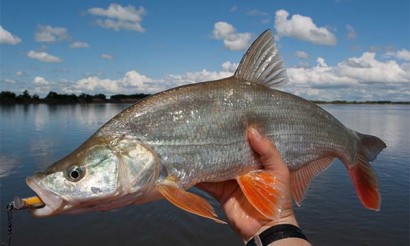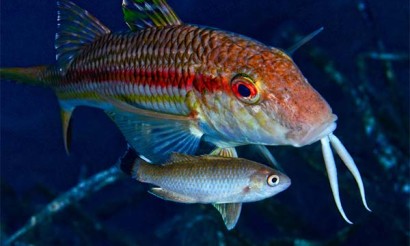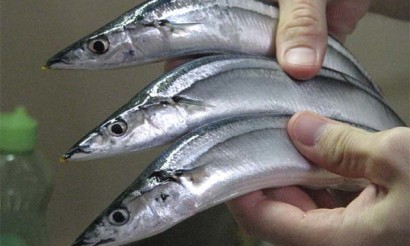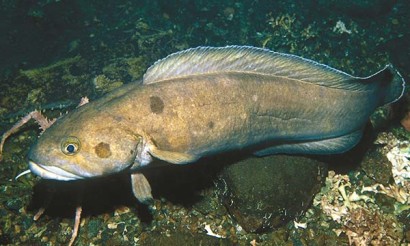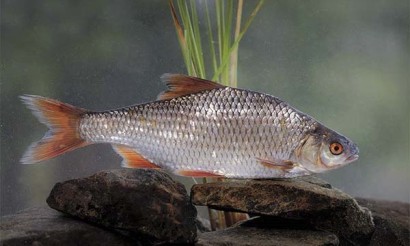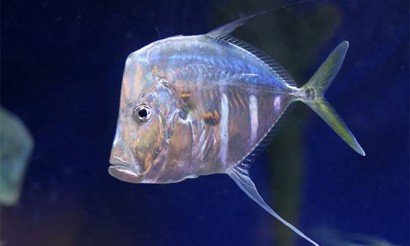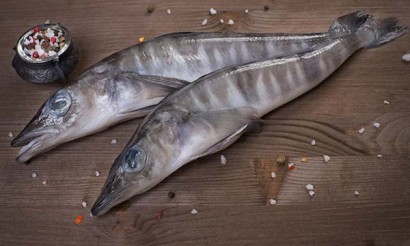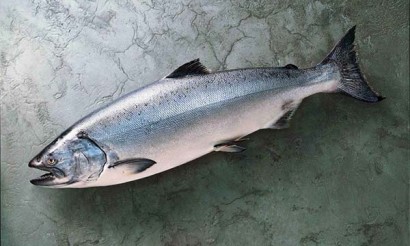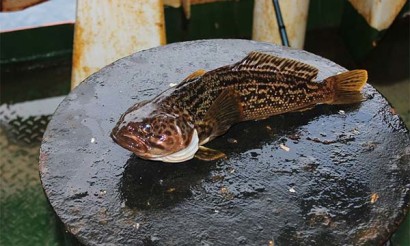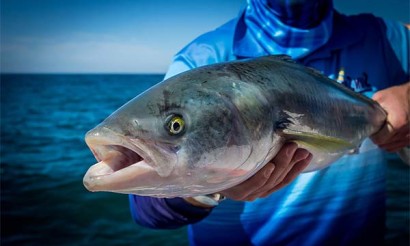Pellet fish: photo, description, useful properties and recipes
Pellet or cheese (Coregonus peled) - one of the few species of freshwater fish that are caught in the wild on an industrial scale and artificially grown in fisheries. Pellet meat has an exquisite taste, saturates the body with quality protein, useful minerals that support the function of systems, internal organs.
- Asker: what kind of fish it is, what it looks like and where it is found
- What does it look like?
- Where does it live?
- What does it eat?
- Breeding process
- Variety
- How to catch cheetah fish: when, where and on what?
- When to catch
- Where to catch
- What to catch
- Composition and calories
- What is the usefulness of pelad fish for the human body
- What are the benefits of dried fish
- How to cook
- Useful if smoked pelad
- Recipe
- Pelad Caviar
- Benefits and harms
- How to salt
- Rules of storage
- Where to buy and how much costs
- How to cook fish pelad: Recipes
- In the oven
- In the frying pan
- Question-answer
- What does a can pelad taste like?
- Fat or not?
- Are there many bones?
- Is it an opisthorchial fish?
Peljad fish: what kind of fish is it, what does it look like, and where does it live?
The whitefish of the genus Sigi of the Salmon family grows to 40-55 cm and weighs 2.5-5 kg. It is found in rivers where it makes long food and seasonal migrations; it is common in northern lakes, oxbow lakes and river channels with a quiet current. Quickly adapts to different water temperatures, but prefers a colder (no more than 22 ° C).

Freshwater inhabitants keep in flocks, sometimes swim in slightly saline waters of deltas, but do not go into the sea.
What does it look like
The body of the pelada with tightly fitting scales - tall, compressed from the sides, oval, colored silver. The back, rising steeply upward behind the back of the head, is almost black. On the proportional cone-shaped head, as well as on the dorsal fin, there are scattered black dots. In contrast to other whitefish have more gill rakers (49-68) and the upper jaw is slightly longer than the lower, although the mouth is considered terminal.
During the mating season, the coloration of fish changes. The back and head turn blue or turquoise. Immediately during spawning, whitish skin tubercles form along the sides, which are more prominent in males. Locals call them pearl placers.
Where does it live
The pikeperch is widespread in the rivers of the Arctic Ocean from the Mezen River flowing through the Komi and Arkhangelsk Regions to the Chukchi Lake Ilirnei. It is abundant in the Ob, Irtysh and their tributaries, in the tundra and taiga lakes of the Yamalo-Nenets and Khanty-Mansi districts. Occurs in Khabarovsk Territory (Amur River).
It prefers full-flowing reservoirs with a quiet current or lakes containing two forms of whitefish - common and pygmy. Young fish gather in flocks closer to the shore, while mature individuals keep to themselves at depth in the water column.
After the ice melts in the spring, the pelad goes to the floodplains and floodplains of the lower reaches in search of food, and rises up the tributaries. When the water recedes to normal levels the fish return to their usual habitats.
What does it eat?
The basis of the diet is zooplankton. In autumn and winter the pelad eat mollusks, small crustaceans (paddlefish, branch-billed crustaceans) that live on the bottom. In summer, it feeds mainly on larvae and pupae of insects. Larger specimens eat caviar, fry of roach, perch and crucian carp.
During spawning migration and spawning, the fish feeds very little or does not eat at all.
The breeding process
The onset of sexual maturity depends directly on living conditions and primarily on the food supply. On average, cheesesteaks become capable of reproduction from the age of 3-6 years.
Spawning in lakes begins in November after the ice sets in. In rivers the pelad spawn from September to December when the water temperature does not exceed 8 degrees. Large specimens go on their spawning migration before others. They go high up the river and have time to roll downstream after spawning. Smaller specimens remain in the spawning grounds for the winter.
Females lay 9-85 thousand eggs, 1.5 mm in diameter at a time. Spawning grounds of pairs are built in pebble or sandy-pebble soil at the outlet of underground springs, which prevent the freezing of this area of the reservoir.
Hatching of 8 mm larvae takes place 4-6 months after the ice melts. They receive nutrients from the yolk sac during the first days and later start to feed on zooplankton on their own.
Varieties of
Depending on the habitat, size, there are three types of pelch:
River ash.
Representatives of this species live in rivers, grow quickly, become sexually mature by the third year of life. They spawn on shingle rivers and other areas with a fast stream.
The common lake minnow.
Lives within a single tundra or taiga lake. It grows up to 50 cm in length with a body weight of 2 kg. The maximum life span of large lake pellets is 13 years.
Dwarf lake minnow.
Lives in small lakes with poor food supply. Average size - 30 cm, weight - 300-500 g.
How to catch fish: when, where and on what?
The artichoke is a cautious fish, it does not let close to itself. To catch the perch one needs camouflage outfit, silence and long throws. With a bite there is a sharp jerk, requiring instant, but accurate hooking, as the fish has soft lips. Fishermen are particularly interested in wrestling large individuals, in which they put up a fierce resistance.
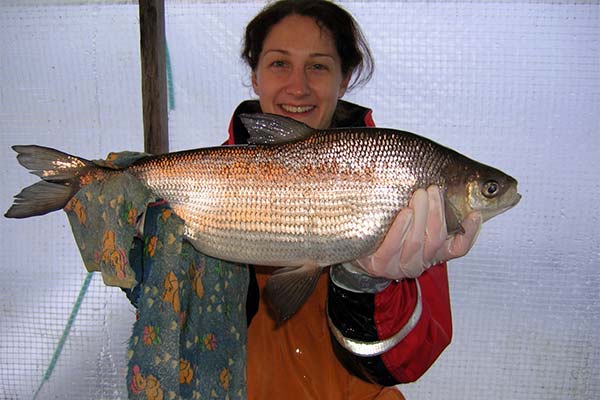
When to catch
The roach is caught year-round during daylight and darkness in all weather conditions.
Where to catch
Steppe cheesecake bypasses places with strong currents, coastal vegetative thickets. Keeps in the water column at a distance of 0.7-1 m from the bottom, sometimes surfacing when hunting for insects. Its location is determined by bursts, diverging circles on the surface of the reservoir.
What to catch
In summer the minnow is caught on a float rod without a sinker with a 5 m rod, a lightweight float that keeps a mormouse afloat, and a hook number 4 or 5. Suitable line - monofilament with a diameter of 0,2 mm. To whitefish respond to the bait, it must be in constant motion.
When fly fishing, dry, sinking flies are used. Of natural baits, the capricious whitefish prefers moths, sea and earthworms, mosquitoes, gadflies, amphipods, sliced mollusks.
When winter fishing in deep water, a pellet sinker is used, which is fixed at a distance of 70 cm from the hook. Before fishing a handful of dry and frozen amphipods are thrown into the hole, the ice at a distance of two meters around the hole shaded with snow. At this time, the bait can be thrown to the surface (6-10 cm from the bottom edge of the ice). If there are no bites, the bait (colored foam rubber, diamonds, pyramids) is kept at a distance of 1 m from the bottom.
Composition and calories
Peljad is rich in easily digestible proteins, nicotinic acid, phosphorus, potassium and zinc.
The cheesecake contains:
- vitamin PP;
- macronutrients - phosphorus, sulfur, potassium, magnesium, sodium, calcium;
- micronutrients - zinc, iron;
- saturated and unsaturated fatty acids.
Body fat of 100 g of edible part of the pelad - 19.1, 5.5, 0 g, respectively. Energy value - 126 kcal.
What is the usefulness of the pel'yad fish for the human body
Pellet meat controls the functions of the nervous system, improves carbohydrate, protein and fat metabolism, prevents the deposition of lipids in the subcutaneous fatty tissue.
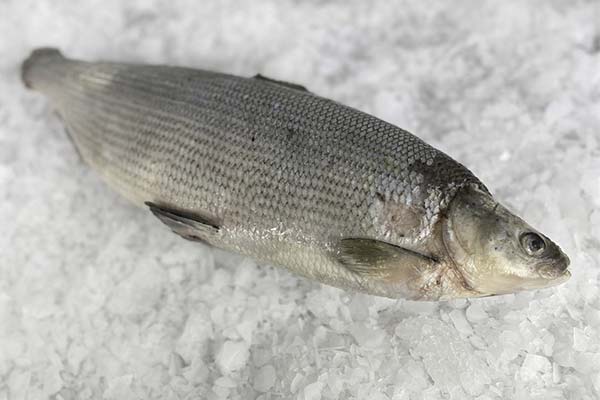
Other beneficial effects of pelada on the body:
- Positively affects the health of the gastrointestinal tract, skin, mucous membranes.
- Regulates blood pressure.
- Improves nerve impulse conduction.
- Regulates the acid-base balance.
- Makes bones more dense, mineralizes tooth enamel.
- Normalizes blood pressure.
- Maintains optimal blood glucose levels.
- Helps cure depression.
- Relieves stomach cramps.
- Prevents the development of atherosclerosis, rickets, osteoporosis, anemia, anorexia.
- Strengthens the roots of hair.
- Protects the body from toxins.
- Slows down aging.
- Increases stamina.
- Fights chronic fatigue.
- Improves sleep.
Veal supports the work of the myocardium, the health of the reproductive system. Fish meat is useful for weight loss, arthritis, arthrosis.
What are the benefits of dried fish
When used twice a week for 100-150 g of dried peled meat reduces the risk of anemia, atherosclerosis, improves blood flow, metabolism, improves mood, reduces the intensity of headaches. When dried, the useful substances in the fish are preserved in full and in a more concentrated form.
Dried cheese is harmful because of the large amount of salt, which disrupts kidney function, water balance, leading to retention of fluids in the body. Lack of heat treatment increases the likelihood of infection with helminths.
How to cook
It is better to dry fish in the spring or fall, when it is more fatty. Start the drying process with salting. Fill the bottom of an enameled basin or pot with a layer of salt. Rub white crystals on the outside and inside of each fish, lay them densely in the container in tight rows with their backs down or sideways. Put the lid on, put a pressure so the fish starts to sap. Put the perch in a cold place for 3-10 days, depending on the size of the carcasses.
When the cheesecakes harden, rinse them and put them in a bowl with cold water for 4-5 hours to soak. If you skip this step, the herring will turn out dry, over-salted, covered with a white stain and will soon oxidize.
After soaking, wash off the mucus from the carcasses, send them to dry on the balcony or hang them on strings in a cool, ventilated room, previously wrapped in gauze.
Drying time depends on the weather conditions and the size of the fish.
Is smoked roe useful?
Smoked pellet, contrary to popular belief, is useful for maintaining the functions of the heart, brain, and digestive organs. The product strengthens the immune system, bone tissue, prevents the development of tooth decay, improves metabolic processes, prolongs the youthfulness of skin and hair.
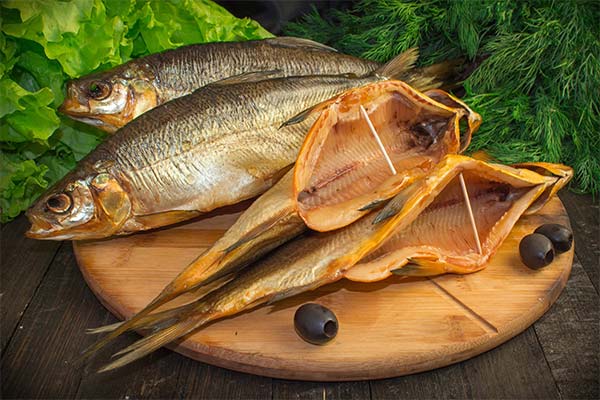
In cold smoking preserves almost all useful substances. Hot smoking reduces the period of cooking up to four hours, but because of high temperatures lose most of the useful properties.
Do not use the product more than once a week. The processing of smoke in the fish accumulates carcinogens that provoke cancer.
Recipe
At home it is easier to prepare hot-smoked cheesecake, as the cold smoke treatment requires more complex equipment, time and concentration.
To smoke the fish yourself and get a delicious dish, you will need several carcasses of fresh pelada (or gradually defrosted) of the same size and a smokehouse with a tray.
Cooking steps:
- Fluff up the bellies, remove the insides.
- Sprinkle the carcasses with the heads with salt on all sides. Place in a bowl, press with an upturned flat plate, set the weight.
- After 3 to 5 hours, rinse fish, hang over sink for 1 hour to let water run off.
- Put 2-3 handfuls of juniper, alder, pear, apple or cherry wood chips in the tray. Light the fire.
- Grease the grate with vegetable oil, arrange the carcasses.
- When the wood chips are burned, set up the smoker. Put the tray, the grate.
- After thick smoke appears set the time for 40 minutes. Do not open the lid during smoking.
After cooking, keep the smoked herring in a closed container for half an hour to stabilize the structure. Serve the fish with boiled potatoes, rice or with beer.
Caviar of pelad.
Small yellowish caviar is a tasty dietary product that promotes weight loss. Fat content of 100 g of the delicacy is 12.7, 2.5 and 5 g, respectively. The energy value is 93 kcal.
Benefits and harms
The composition of cheese caviar in significant quantities includes choline, cobalamin, selenium and iron.
The product strengthens the heart muscle, improves blood circulation, prevents the formation of cholesterol plaques and vasoconstriction. Antioxidant selenium improves the immune system, accelerates regeneration of muscle and skin cells, supports the thyroid gland, and reduces the risk of neoplasms.
A large amount of sodium chloride is a reason to refrain from eating caviar for people with unhealthy kidneys, hypertension and a tendency to edema.
How to salt
To salt 0.5 kg of freshly caught fish caviar, you need an enameled, glass bowl, a liter of water and 1 tbsp. salt and sugar.
How to prepare:
- Pour water into a saucepan. Pour the sugar, coarse ground rock salt.
- Put it on a stove, bring it to a boil.
- Remove the roe from the roe by rubbing it through a colander. Or put the product in warm water and whisk with a fork.
- Cool the brine to 50 degrees. Put in it the caviar, cleaned of membranes. Allow it to stand for 15-20 minutes or longer. Depends on how long it's been left in the brine.
- Drain the brine with the caviar in a colander. When the liquid drains, pour the finished product into a glass jar. Close the container tightly with a lid, put it in the refrigerator, where the caviar will last up to five days.
The salted delicacy can be eaten 4 hours after cooking.
Rules for storage
Like any other fish in chilled form pelad keeps its freshness in the refrigerator on ice for two days. The freezer extends the shelf life up to four months. Fish keep better if gutted before freezing.
Salted or hot-smoked cheese is edible for up to 10 days if it has been kept at 0-2°C.
Where to buy and how much does it cost
It is difficult to find herring in an ordinary grocery store. It is sold in specialized outlets in the vicinity of the fishery and at selling online sites.
Prices vary depending on the condition and size of the fish and the region. Freshly frozen fish is sold in Omsk from 220 rubles, to 550 rubles in Moscow. Dried and smoked cheese costs twice as much.
How to cook fish pelad tasty: recipes
Low-calorie fish is baked on the tray and in pots with cream, fried in breading in a pan or on the barbecue, stewed, salted, dried, smoked, stuffed. Pickled herring is popular in Siberia as a substitute for herring.
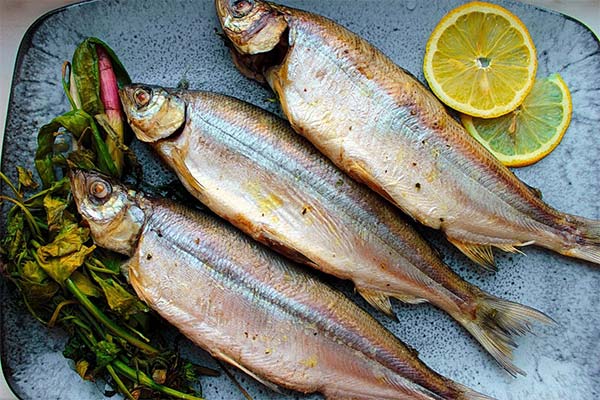
In the oven
To bake 3 cheesecakes, you will need additional products:
- 30 ml olive oil;
- 3 lemon slices;
- 1 tbsp. lemon juice;
- bunch of parsley;
- salt, pepper.
Cooking algorithm:
- Clean the fish, gut it. Cut off tail, head, fins. Rinse under running water, dry.
- Rub the outside and inside with a mixture of salt and pepper. Drizzle with lemon juice.
- Turn on preheated oven up to 200 ° C.
- After 10-15 minutes grease a baking dish and place the bellies on it.
- Put a sprig of parsley in each belly, brush with the rest of the oil using a cooking brush.
- Bake in the oven for 20 minutes, covered with a sheet of foil.
Serve the finished dish with herbs, cut vegetables or grilled vegetables.
In the pan.
To fry soft inside and crispy outside fish, prepare a set of products:
- 1 kg of peledi;
- half a lemon;
- flour for breading;
- oil for frying;
- salt, pepper.
How to prepare:
- Cut fish into fillets. Cut into portions.
- Rub them with salt, pepper, and a splash of lemon juice.
- Heat a frying pan with vegetable oil on the stove.
- Prepare a container with breading.
- Roll each piece in flour on both sides, fry until appetizing crust.
Serve crumbled rice or mashed potatoes, vegetables, sour cream to fried peledi.
Q&A
Fish consumers are interested in the gastronomic qualities of the product and whether the cheese is a source of opistorch contamination.
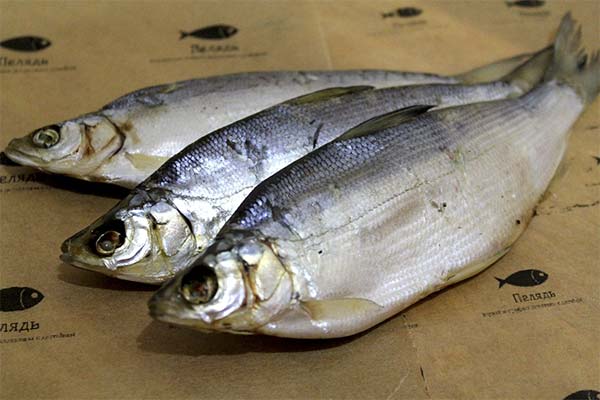
What does a pelad taste like?
The pelad meat holds its shape well and does not disintegrate into separate fibers when tasting. It tastes fine, pleasant, without the aftertaste of mud or standing water.
Fatty or not?
It is difficult to call herring fat, although when you eat it, it creates a feeling of melting in the mouth. A 100 g of fish has only 5,5 g of fat.
Are there many bones?
Although the pelad is not a saltwater fish, it has no small bones. The cheese skeleton consists of a backbone and rib bones easily separated by filleting.
Are opisthorchiasis fish?
Until recently, opisthorchias were considered to be exclusively carp carriers, but the same flatworms have been repeatedly found in whitefish.
Whitefish inhabiting the lower reaches of the rivers Ob and Irtysh, the areas inhabited by the indigenous peoples of the North, who prefer raw fish to heat-treated one, are massively infected.
Sick specimens differ from healthy ones in stunted growth and development. At the initial stage of the disease it is difficult to recognize sick fish without parasitological examination.
To neutralize opisthorchiasis, the cheese is frozen for a week at a temperature of -12 degrees. Parasites are killed by hot smoking, cooking in boiling water for at least 20 minutes.
Wild and artificially bred pelad is a dietary useful product, from which many delicious dishes are prepared. It is important not to forget that any freshwater fish carries a risk of parasite infestation.
«Important: All information on this site is provided for informational purposes only. for educational purposes only. Please consult a health care professional before making any recommendations. health care professional. Neither the editors nor the authors shall be liable for any possible harm caused by materials."

